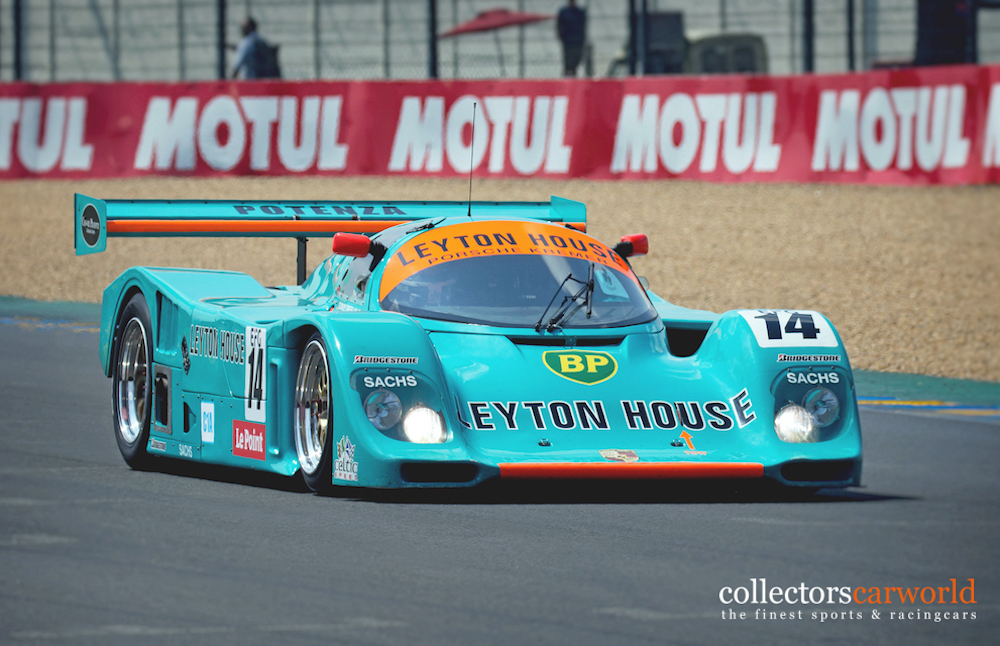The Group C regulations in force between 1982 and 1993 led to the development of legendary cars that wrote some of the most glorious pages in the history of the 24 Hours of Le Mans and the FIA World Endurance Championship. It is not without reason that this period is considered the golden age of endurance racing. Despite strong competition from the Lancia LC2, Porsche dominated the races very early on with the 956 and the 962. However, with the participation of Jaguar, Mercedes-Benz, Toyota, Nissan and Mazda, the competition then became fiercer. Many of them also participated in the IMSA championship, as the GTP class had similar regulations.

As costs rose, the FIA decided to introduce a new Group C junior class in 1983. In this class, designed for private teams and small manufacturers, cars were limited to a minimum weight of 700 kg and a maximum fuel capacity of 55 liters. With competitors limited to five fuel stops within a distance of 1000 kilometers, cars were effectively allowed 330 liters per 1000 kilometers.
Then in 1984, the junior Group C was officially renamed Group C2. The C series was incredibly popular and by 1989 the popularity of the championship was almost as great as that of Formula 1 . When C1 cars like a Peugeot reached top speeds of over 400 km/h at Le Mans, the FIA tried to turn the championship into a formula series to replace C2 cars.
New rules limited the performance of cars built under the original rules, but on the other hand benefited teams with 3.5-liter engines. The so-called new formula cars were much more expensive than the original C1 cars. The result of this decision led to the rapid decline of Group C, as the costs were too high for private teams. As several teams decided not to participate, it was decided to cancel the championship in 1993 before the start of the first race.

Qualifying race for the Le Mans Classic 2021
The Le Mans Classic is held every two years and offers Group C racing participants the opportunity to take part in a 45-minute race on Saturday lunchtime as a prelude to the main event. Given the high demands on the circuit for cars and drivers, and the fact that the event is held every two years, competitors must participate in two qualifying races to earn their eligibility to compete in the Le Mans Classic, July 01-04, 2021. The option is within the 2020 or 2021 Peter Auto series – likewise, participation in the Daytona Classic 12-hour race and the Sebring Classic will also be accepted, as the Group C technical specifications are identical in the competitions organized by Historic Sportscar Racing and Peter Auto.
Group C returns to Germany
The Bosch Hockenheim Historic from 06 to 09 May 2021 will host the Momo Group C Super Cup, an invitational race for the thunderbirds of the eighties and early nineties.
Fritz Gebhardt has reorganized his old cars from back then and is currently having them carefully restored by his team, Gebhardt Motorsport. He is also the man behind the spectacular return of Group C to Germany, which PITWALK has exclusively revealed in the new issue. The 180-page booklet contains all the background information on how the Group C festivities in Baden will come about and which cars will be competing.
Every motorsport fan with a soft spot for the history of racing should make a note of the date now – and find their way to Hockenheim on the first weekend in May.
The pictures to be seen are from the Le Mans Classic 2018 event. Find out more.

About our photographer Rainer Selzer
Rainer Selzer is always ready for a big shot and is focused on historic motorsport.
He is working with us for over three years and visits motorsport events, classic car meetings or car museums. Follow him on instagram @rs65photos or visit his homepage www.rs65photos.com for more!
Report by Rainer Selzer / collectorscarworld.com and rs65photos.com










